Lineage regulators direct BMP and Wnt pathways to cell-specific programs during differentiation and regeneration
- PMID: 22036566
- PMCID: PMC3219441
- DOI: 10.1016/j.cell.2011.09.044
Lineage regulators direct BMP and Wnt pathways to cell-specific programs during differentiation and regeneration
Abstract
BMP and Wnt signaling pathways control essential cellular responses through activation of the transcription factors SMAD (BMP) and TCF (Wnt). Here, we show that regeneration of hematopoietic lineages following acute injury depends on the activation of each of these signaling pathways to induce expression of key blood genes. Both SMAD1 and TCF7L2 co-occupy sites with master regulators adjacent to hematopoietic genes. In addition, both SMAD1 and TCF7L2 follow the binding of the predominant lineage regulator during differentiation from multipotent hematopoietic progenitor cells to erythroid cells. Furthermore, induction of the myeloid lineage regulator C/EBPα in erythroid cells shifts binding of SMAD1 to sites newly occupied by C/EBPα, whereas expression of the erythroid regulator GATA1 directs SMAD1 loss on nonerythroid targets. We conclude that the regenerative response mediated by BMP and Wnt signaling pathways is coupled with the lineage master regulators to control the gene programs defining cellular identity.
Copyright © 2011 Elsevier Inc. All rights reserved.
Conflict of interest statement
Figures
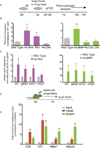
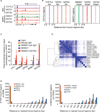
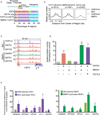

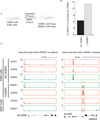

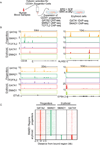
References
Publication types
MeSH terms
Substances
Associated data
- Actions
- Actions
- Actions
- Actions
- Actions
Grants and funding
- P50 NS040828/NS/NINDS NIH HHS/United States
- P30 HD018655/HD/NICHD NIH HHS/United States
- HHMI/Howard Hughes Medical Institute/United States
- P30 DK056465/DK/NIDDK NIH HHS/United States
- 1 RC2HL102815/HL/NHLBI NIH HHS/United States
- R01 HG002668/HG/NHGRI NIH HHS/United States
- R01-HG002668/HG/NHGRI NIH HHS/United States
- P30-HD18655/HD/NICHD NIH HHS/United States
- U01 HL100001/HL/NHLBI NIH HHS/United States
- RC2 HL102815/HL/NHLBI NIH HHS/United States
- P01 HL032262/HL/NHLBI NIH HHS/United States
- K01 DK085270/DK/NIDDK NIH HHS/United States
- 5P01HL32262-29/HL/NHLBI NIH HHS/United States
- 1R01DK080040-01/DK/NIDDK NIH HHS/United States
- R01 HL048801/HL/NHLBI NIH HHS/United States
- R01 DK080040/DK/NIDDK NIH HHS/United States
- 5R01HL048801-18/HL/NHLBI NIH HHS/United States
- T32HL007623/HL/NHLBI NIH HHS/United States
- K01 DK085270-02/DK/NIDDK NIH HHS/United States
- P50-NS40828/NS/NINDS NIH HHS/United States
- T32 HL007623/HL/NHLBI NIH HHS/United States
LinkOut - more resources
Full Text Sources
Other Literature Sources
Molecular Biology Databases

